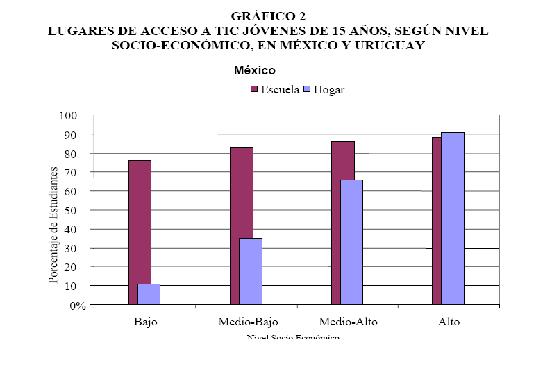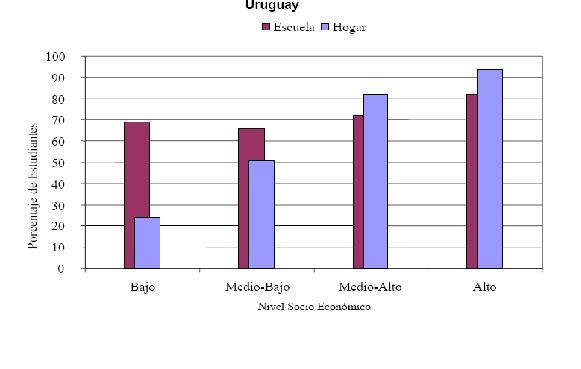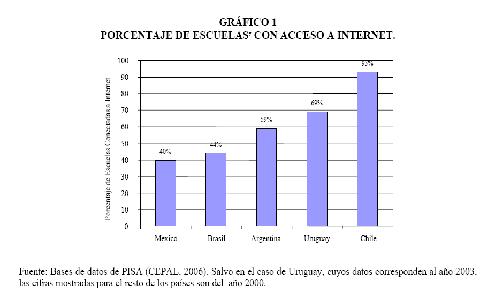
Results of the implementation of information technologies in latin american schools varies and depend upon the policies and procedures stablished by each country. These results are measured by indicators like the reduction of the digital gap, the improvement of the learning process, improvements on the utilization of computers and so on.
However to effectively measure the impact of IT in education process, specially in latin countries one critical factor must be observed: cost; the cost of technology is essential because in most cases is a limiting factor due to the fact that many families in our countries have limited sources of money or simply they do not have it, no matter is a student have access to one computer or technological resources in his/her school, if this student can not use time at home to practice, the speed and quality of the learning process gained thanks to a good use of technology will be reduced.
Many studies has shown the reduction of digital gap thanks to the implementation of several public initiatives to deliver computers on public schools , just to set a few examples, Chile studies shows that 49% of students use computers at their schools (TIMSS, 2004), PISA studies shows similar results for students in Mexico and Uruguay.
Graph 1 and 2 show places in Mexico and Uruguay where 15 years old students access technological resources, it is organized by income level from low to high (left to right) blue color represents home, purple represents school what these graphs shows is that many students have access to technological resources at their schools, as the income of their families is higher more resources are available at home, this clearly shows what is the impact of the cost factor.
Teachers also gets benefited with the use of IT, for example in the areas of statistical tools to track and keep a record of the advance of each one of its students in the learning process thanks to key indicators and evaluations being analized with their computers.
It is not easy to measure how the learning process in education has improved thanks to the use of technological resources. However one thing is for sure, Internet has provided a vast amount of information to teachers and students, utilization of online tools as for example google maps to teach geography or online dictionaries gives both students and teachers an unique view of their world and their language without leaving the classroom.
Graph 3, Schools with access to internet in several latin american countries (2000-2003), Chile is the latin country with more access to internet from schools.
The constant flow of technological advances and the need of learning them creates several mental process that improves the learning skills of the students, making more easy to gain new knowledge at the schools.
The downside of this use of the technology is that many teachers are not prepared enough to use this resources in a properly manner and in most cases lessons became boring and a waste of time, the material of the lesson is not absorbed by the student and its mind becomes lazy and uninterested leading them to misuse the technological resources and face several limitations when technology becomes part of their life.
http://www.cepal.org/SocInfo






Join the Discussion (0)
Become a Member or Sign In to Post a Comment